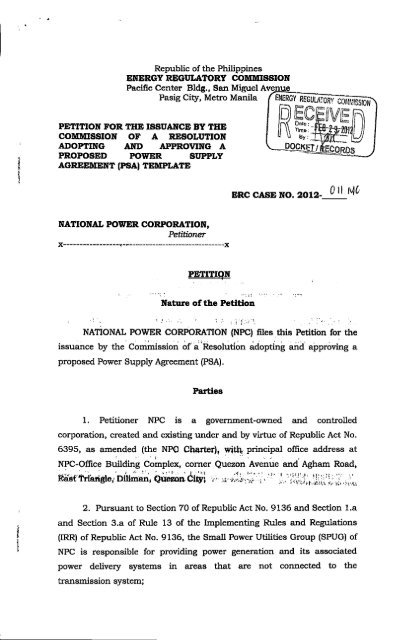Contents:
The majority of the time, yield is determined only on rental income, whereas return incorporates capital gains as well. Before making a purchase choice, customers should confirm that the yields and returns are on an annual basis. The coupon rate is the amount paid to the bondholder by the issuer until its date of maturity. On the other hand, the yield of maturity is the total return earned by the investor till its maturity.
To calculate it, you need to add the increase in the value of the stock, add the dividend, and then divide the value by the current market price. When investing, the primary objective is to earn the maximum possible returns on the same. This is primarily why individuals hunt for suitable investment avenues that match their risk profile and investment strategy and also deliver attractive returns. To measure how the investments are performing or have performed, the yield metric is used. The name of the class of the mutual funds only implies the strategy that the fund manager adopts rather than the actual performance of the funds.
Moreover, investors should be aware that YTM is a theoretical figure, and actual returns may vary due to changes in interest rates, bond prices, and other market factors. Debt mutual funds have both Government and corporate bonds in them as underlying assets. For a debt mutual fund, YTM calculates the fund’s expected yield by taking the fund’s earning as a whole instead of a single bond. However, YTM is a good indicator for closed-ended funds and fixed-maturity plans as the portfolios are usually held till maturity.
In contrast, the dividend yield is the percentage of the stock’s price that the company returns as dividend to its shareholders. Dividend yield funds are a type of mutual funds that invest mostly in companies that have the potential to provide regular dividend payout. As per the norms of the Securities and Exchange Board of India , a dividend yield fund invests at least 65% of its portfolio in dividend-yielding instruments.
Coupon rate can be explained as the interest rate paid on the bond’s value by the bond issuer. The users should exercise due caution and/or seek independent advice before they make any decision or take any action on the basis of such information or other contents. Apart from the usage in bonds, both terms are quite different from each other.
These costs might include stamp duty, legal fees, or rent lost as a result of the property becoming unoccupied. This Tax Benefit would depend on the Tax Slab an Investor falls into. That means two investors can look at the same Tax Free Investment but have different Tax Equivalent Returns if they fall into different Tax Brackets. Earnings yields is a better measure compared to the Dividend yield because DY ignores the impact that retained earnings of the company have on the growth prospects of the company. Which gives us a yield of ~ 0.1487, which means ~ 14.87 % compounded annual return.
Yield to Maturity
Though we have filed complaint with police for the safety of your money we request you to not fall prey to such fraudsters. You can check about our products and services by visiting our website You can also write to us at , to know more about products and services. While both are earning the same amount, B is getting less return as he/she has invested a higher amount than A.
Understanding YTM can help investors make informed investment decisions. This article will delve into the concept of YTM, its calculation, and practical examples to understand this financial concept. The Indian bond market has steadily grown in recent years compared to the yesteryears. The bond market is growing because of the availability of quantities of information with regard to the bonds and its significant contribution to one’s long-term financial progress. Despite the market’s rapid expansion, individual investors continue to struggle with comprehending specific bond market phrases and terminologies. They are not able to proceed further with their bonds investment plan.
Before putting a home on the market, real estate agents and sellers frequently analyze the yield. In fact, this concept can be applied for calculating the returns of any Fixed Income security, if the cash flows are known. Since it is a rate of return, the yield is usually communicated in percentage terms. Calculation of the yield requires understanding of the Time Value of Money, so investors should be aware about Discount Factors and their usage. The yield to maturity, on the other hand, is actually the rate of return that an investor receives when the bond matures. It is the total rate of return that shall be earned by a bond when it makes all interest payments and repays the original principal.
Optimal farming may even involve swapping between multiple tokens to arrive at the asset with the highest difference between yield and returns. Yield Farming is one popular method of passively generating crypto tokens as income. It involves depositing your crypto assets on a platform that lends them out to other liquidity providers and exchanges. This can allow you to earn both interest and a portion of the transaction fees.
Popular Searches in Stock Market
Equity REITs in the United States had an average annual return worth 10.7% for the five years ending March 31, 2022, according to the FTSE Nareit All Equity REITs index. Yield is the rate of return or the earnings generated on an investment over a period of time. It is also depicted as a percentage, depending upon the invested amount and current market value of the security. It also includes the total interest earned or dividends received from holding a particular security. For real estate, it is expressed as the annual income from the property. Foreign investments contain greater risks than U.S. investments, and can decline significantly in response to antagonistic issuer, political, regulatory, market, and economic dangers.
- No worries for refund as the money remains in investor’s account.
- Govt platforms like RBI Retail Direct and many new-age companies have made it easy for investors to invest in Bonds and Debentures.
- But one must make sure to understand the reason behind unusually higher yields as it may rise from the falling value of the financial instrument.
Bond yields and earnings yields are two powerful tools for analysts and for asset allocators. They are an important decision point to decide whether the allocation should be made to equity or to debt. Let us first look at how earnings yields differ from bond yields with the help of an earnings yield vs bond yield chart. While interesting the difference between earnings yield and bond yield, let us also look at what is an acceptable gap and how to interpret the gap. As mentioned before, we need to discount all the future cash flows to obtain the current fair value of the bond. When calculating the YTM, we will already know the current price of the bond, which is P in below formula.
The yield to call is an annual fee of return assuming a bond is redeemed by the issuer on the earliest allowable callable date. Treasuries and other decrease-danger investments have fueled rising demand for prime-yielding investments. Fixed-revenue investments are municipal bonds, corporate bonds, authorities bonds, and Treasury bonds that pay returns on a set schedule.
Never miss a trading opportunity with Margin Trading Facility
Yield can also be used to compare different investments that have the same coupon rate. However, high-yield bonds carry a higher risk of default than investment grade company bonds and treasurys. Bond funds can help to decrease this risk by permitting you to easily personal a broad portfolio of excessive-yield bonds.
If it increases too much, that can be an indication of fall in the stock price or it may also mean that the company is giving higher dividends. Increase in dividend pay-out is usually a good sign as it may indicate that earnings of the company are increasing leading to increase in the stock prices. Mutual funds, stocks, and bonds are three widespread forms of securities which have each rates of return and yields.
Form 424B2 BARCLAYS BANK PLC – StreetInsider.com
Form 424B2 BARCLAYS BANK PLC.
Posted: Fri, 05 May 2023 15:47:20 GMT [source]
In the case of a bond, the yield refers to the annual return on an investment. The yield on a bond is based on both the purchase price of the bond and the interest promised – also known as the coupon payment. Investors across the world refer to data points while making financial decisions.
But, if the investment offers the same rate of interest for monthly payments, then one might opt for monthly payments. While yield can be identified as the percentage increase on a given investment, return is the absolute dollar amount. On the other hand, return refers to a given period of investment, i.e., one or two or any number of years. If the equity exposure is more than 65%, then the rules of taxation of equity funds apply. Therefore, you have to be mindful of equity exposure before you invest. According to SEBI guidelines, these funds need to invest at least 65% of the assets in dividend-paying stocks.
A low rental yield, which can range from 2 to 4 percent, might indicate that a property is overpriced. High rental yields are beneficial for investors since they normally produce a consistent cash flow. Because of the consistency of rental revenue, investors choose homes with a rental return above 5.5 percent.
The rate of return or earnings gained on investment over time is referred to as yield. It can also be expressed as a percentage, depending on the amount invested and the security’s current market value. It also covers the entire amount of interest or dividends received from holding certain security. It is reflected in real estate as the property’s yearly revenue.
Yield to maturity is a special concept applicable to bonds and the returns they generate. Usually, when calculating bond yield, the annual return earned from the bond is assessed. However, the returns earned from a bond up to its maturity are calculated under this metric.
Monthly Income Plan (MIP) : Mutual Funds to Earn Monthly Income
In addition, combining these will help you to reap returns and translate into the concept of higher coupon rates which means higher yield. The rate of interest on FD mentioned by the bank is normally the return offered on the principal amount based on compounded interest. For instance, State Bank of India , the country’s largest lender, offers an interest rate of 8.75% for one to 10 years of tenor for deposits below 1 crore. So if you invest 10,000 for three years, in the first year at 8.75% on quarterly compounded interest you will get 904 as interest.
So, it can be imagined that the Yield to Maturity of a Bond is a dynamic value, which changes regularly depending on the price of the bond and the time left till maturity. Asian shares wallow at one-month lows as bank worries weighTech giants buoyed U.S. stock futures, despite fresh jitters surrounding the world’s two biggest economies. Following higher-than-anticipated profits and $70 billion in stock buybacks announced by Microsoft and Alphabet, Nasdaq futures were up 1.4% and S&P 500 futures up 0.5%.
Stock market today: Markets steady after latest bank failure – Detroit News
Stock market today: Markets steady after latest bank failure.
Posted: Mon, 01 May 2023 13:46:16 GMT [source]
YTM is the annualized rate of return an investor can expect if they hold a bond or a debt fund until its maturity. It factors in the bond’s face value, purchase price, time to maturity, and coupon rate. YTM enables investors to compare bonds or debt funds with different characteristics and make informed investment decisions. However, it’s essential to note that YTM assumes that all interest payments are reinvested at the same rate as the current YTM, which may not be the case in reality. YTM is yield to maturity which means the total return you expect from your investment in bonds/debt mutual funds if the same is held till maturity. It is used for comparing different bonds and debt funds with different maturities.
The yield to maturity becomes relevant only when an investor purchases the bond from the secondary market. Assume that a particular company issues a bond with a face value of Rs. 20,000. So, when investing Rs. 20,000 in the bond, they will receive Rs. 4,000 per annum as interest payments. The coupon rate is like fixed income security for governments in which the issuer of the bond receives the annual interest payments.
Banks, non-banking finance companies and corporates often advertise their fixed deposits . The yield of maturity is higher than the coupon rate because an investor purchases the bond at a discount. Here’s another example that clearly tells the difference between coupon rate and yield of maturity. Assume that there’s a bond with a face value of RS 20,000 with a 20% coupon rate.
Yield is expressed as the percentage of the face value of the instrument or the current market value. It is a part of the total return, which considers all the cash flows from the investment. Similarly, gains on stock prices also accrue profits to investors. The yield to maturity is the percentage rate of return that bondholders will receive if they hold the bond till the time it matures. The yield to maturity becomes relevant when an investor purchases a bond from the secondary market.





